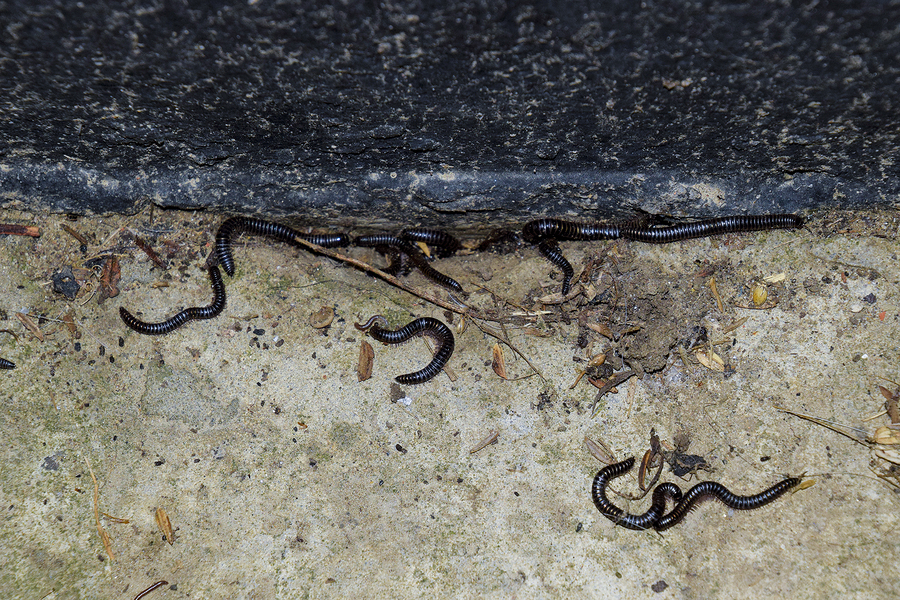READY TO GET STARTED?
REQUEST A FREE ESTIMATE
Fill out the form below or call (888) 466-7849 for a free, no-obligation estimate.

Seeing “thousand legger”, creepy-crawly, slithering, worm-like pests in mass amounts inside your home? You’re not alone. They’re called millipedes and millipedes in houses are common at certain times during the year, particularly after heavy rains, during drought, or when temperatures drop – all conditions that can make their outdoor habitats less comfortable. Once millipedes are in the house, they’ll search for shelter and a source of moisture – preferring damp areas such as basements, laundry rooms, and crawlspaces.
Millipedes are arthropods, not insects, that typically have hundreds of legs (not thousands as their nickname implies). Their size depends on the species but they usually range from 1/4 to 2 inches long with slender, round bodies – similar to worms.
Although creepy to some, millipedes are not dangerous or harmful to humans or pets. They don’t bite or sting, infest or damage wood, food or clothing – but they can release an unpleasant-smelling fluid if threatened that may cause skin irritation. If you come directly in contact with millipedes, rinse the affected area immediately after.
Millipedes feed on dead and decaying matter – anything that’s rotting, dead insects, vegetable matter – which is vital in the decomposition of plants and animals, an important step in the soil fertilization process. They will occasionally eat young plants but the damage is usually minimal.
Millipedes prefer to be outdoors and can be found in areas with a lot of moisture – under rocks, piles of wood, flowerpots, in leaf litter or grass clippings, in gardens and flowerbeds, under mulch – any hiding spot that’s damp and undisturbed. You’re more likely to see them at night, when they leave their habitats, crawling around on sidewalks, driveways, patios, etc.
When weather conditions aren’t ideal outdoors, millipedes can migrate into structures in large numbers via doorways, expansion joints, and/or wall voids. Once inside, millipedes will die quickly, especially if there is no abundant source of moisture. If you’re seeing millipedes inside frequently, it may be a sign that they are breeding outside around your home, or that you have moisture issues that need to be corrected.
The best way to prevent a millipede infestation is to eliminate debris and decaying matter from around your home and yard – especially around your home’s perimeter, and correct moisture issues. Repair leaking pipes or faucets, check to be sure lawn sprinklers are functioning properly, consider upgrading your gutters with a gutter guard system, and ensure basements or crawlspaces are adequately ventilated. One of the most effective methods to reduce moisture and improve overall home health is to enclose your crawlspace.
If you’re seeing millipedes inside, a quick fix is to use a vacuum to get rid of them. If you’re experiencing a millipede infestation, it could be a sign of other issues, and it’s recommended to get your home inspected by a pest control company that can identify and correct entry points, check for and make suggestions related to moisture problems, and get you on a routine pest control service – to prevents future millipede and other pest infestations. Request a free estimate now or call (888) 466-7849.
Categories